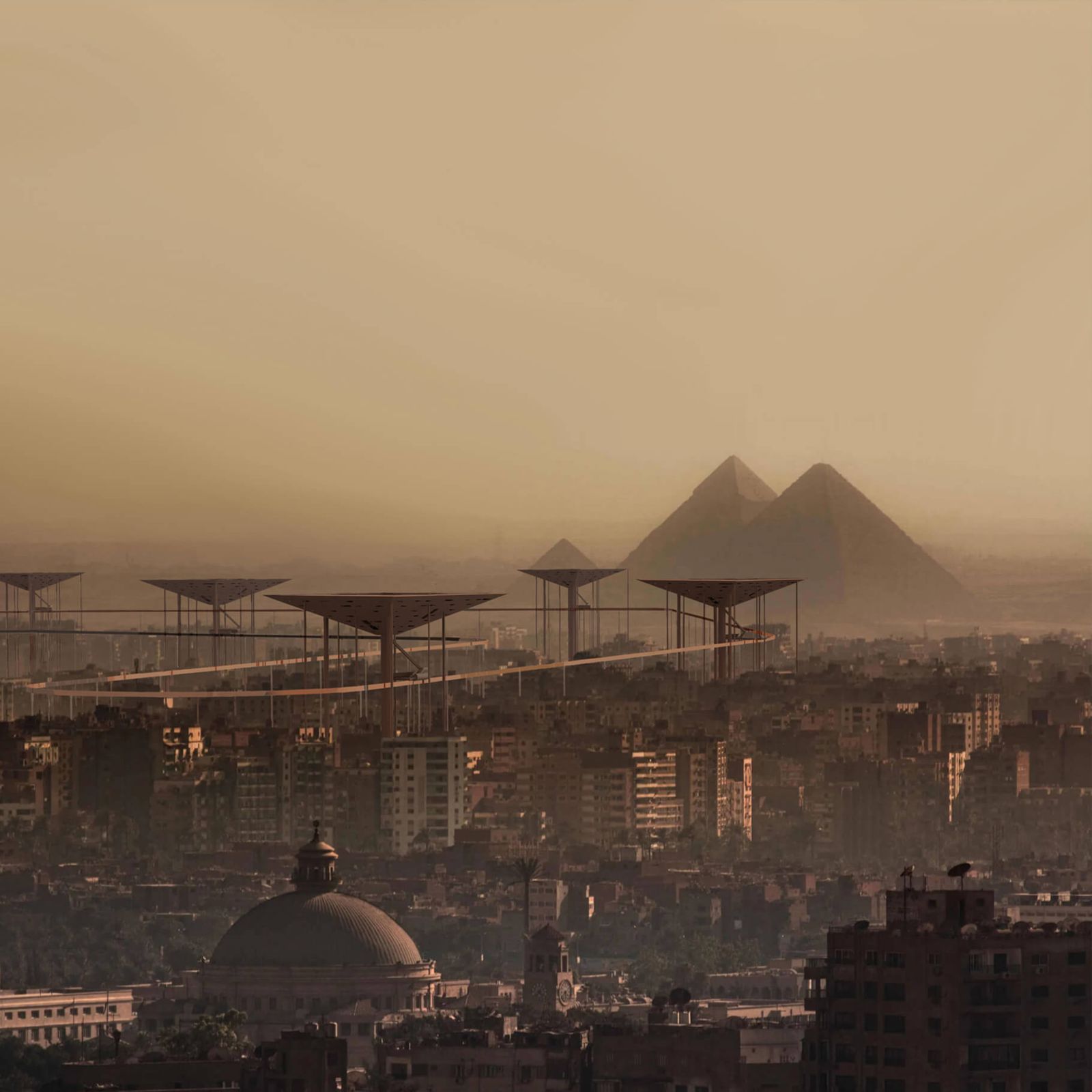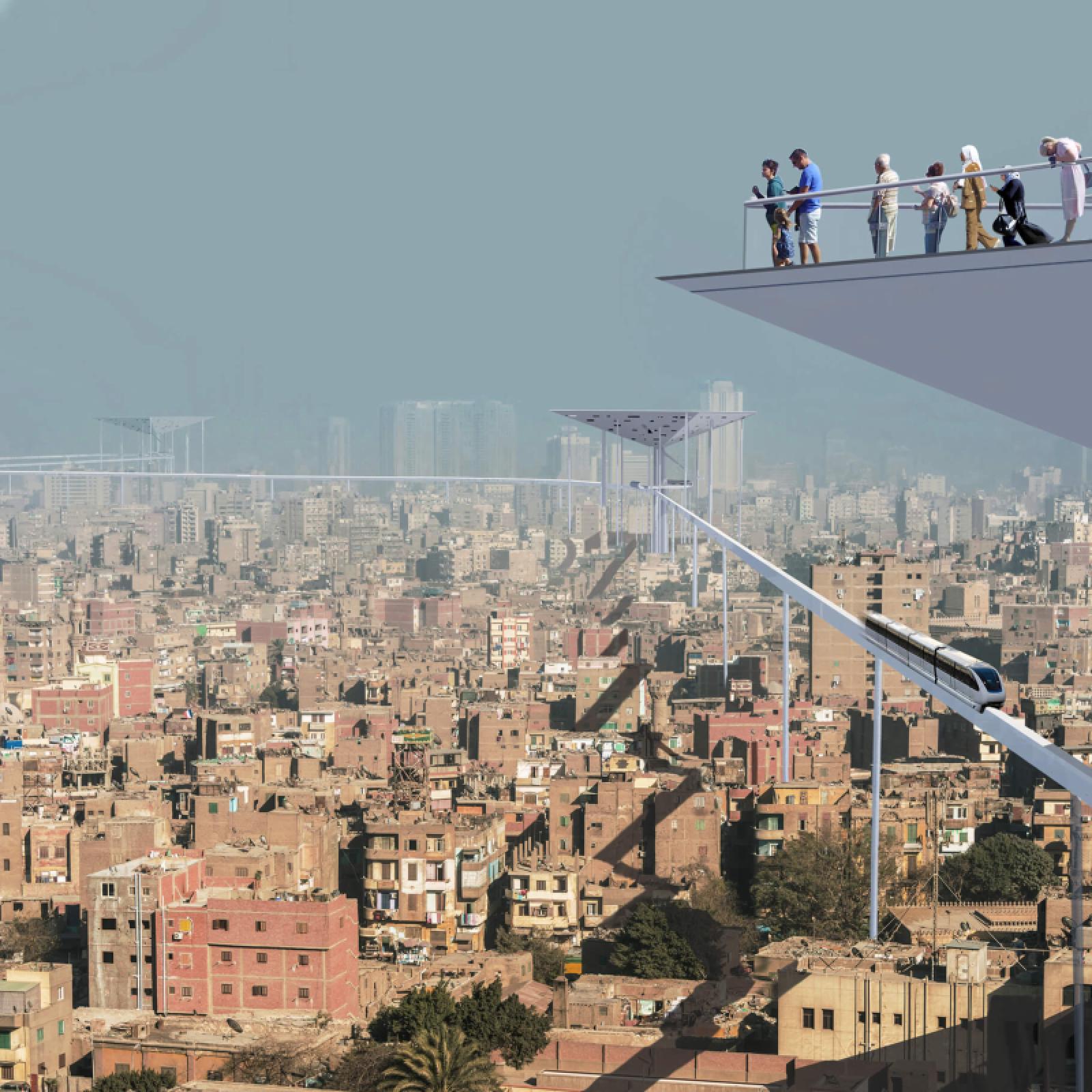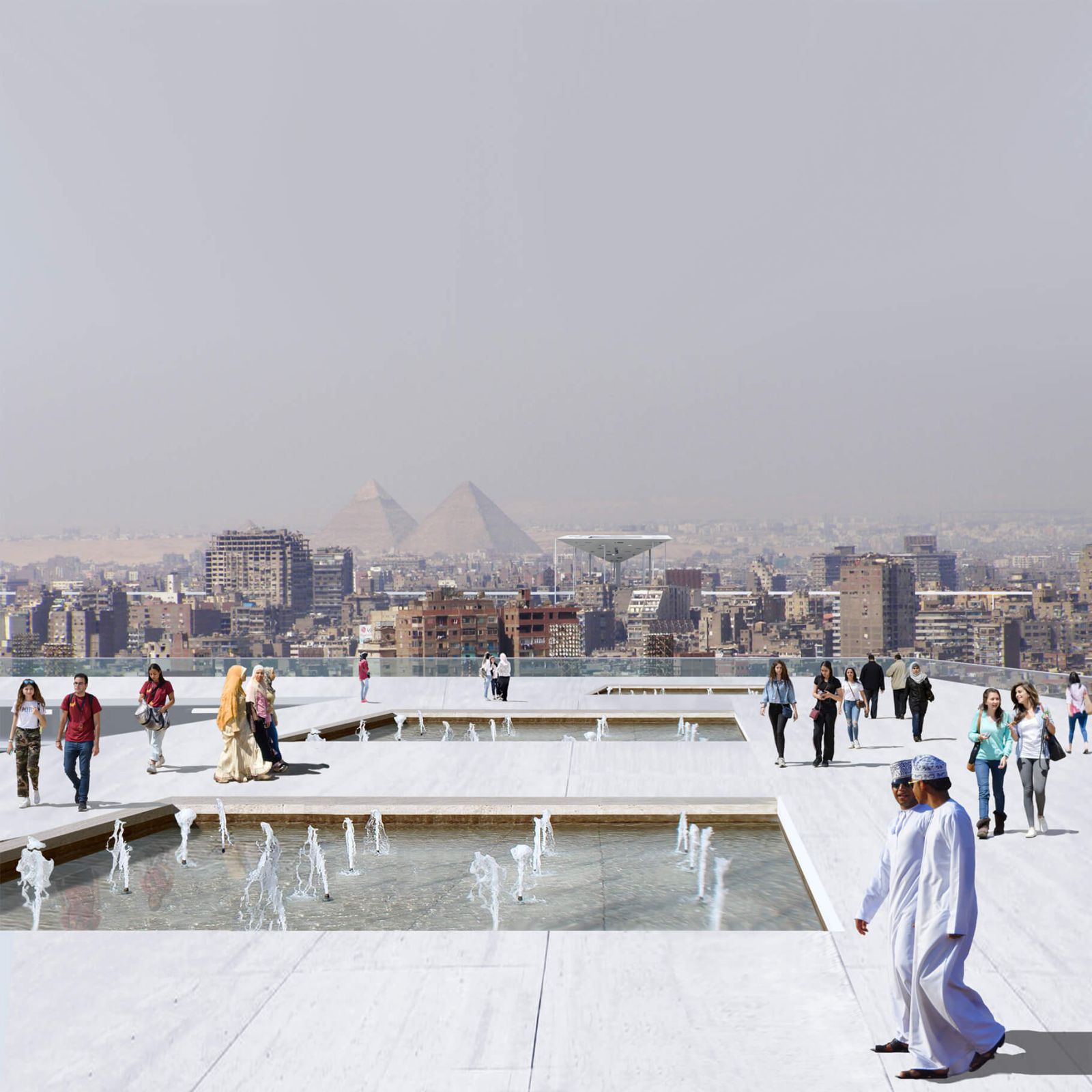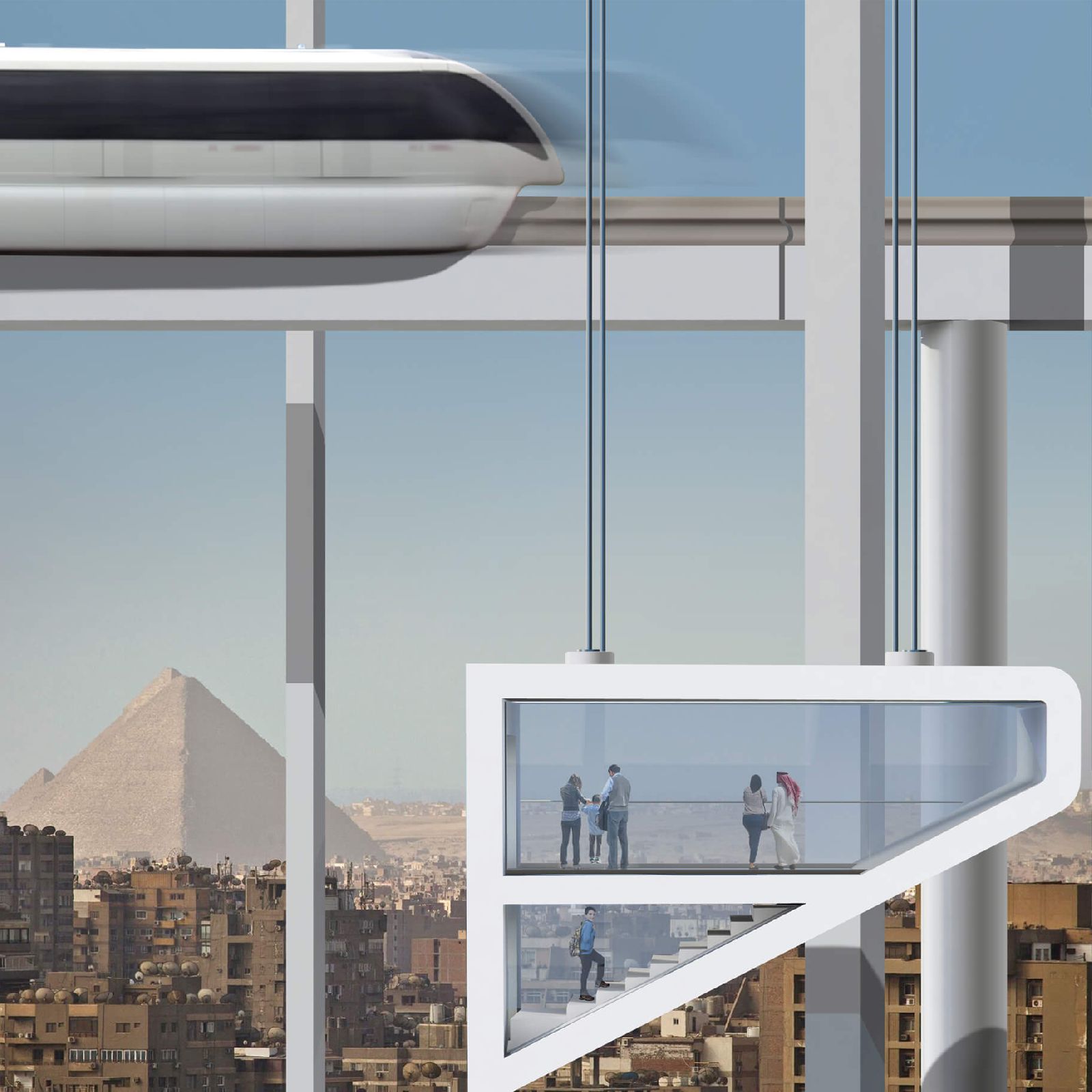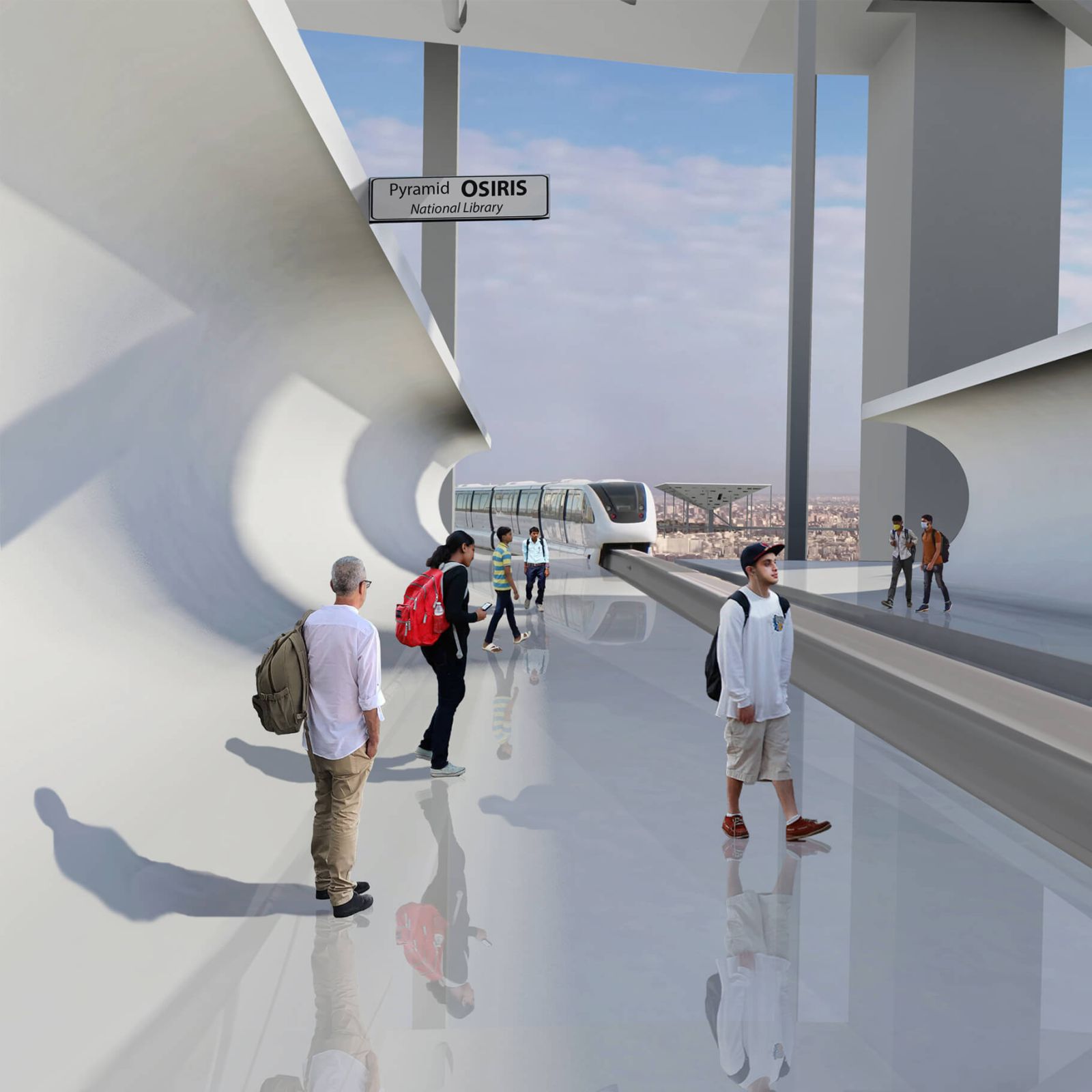Cairo, the capital of Egypt, is immense. With its almost twenty million inhabitants, it is the most densely populated metropolis on the African continent. It stands at the southern end of the great delta of the Nile, at the point where the desert gives way to the fertile lands of Lower Egypt.
Modern Cairo is a chaotic expanse of houses and concrete that is rapidly overwhelming the traditional plantations of date palms and ancient vegetable gardens which, in former times, fringed the banks of the Nile with greenery. Today, Egypt’s remaining agricultural land is being used up and replaced by large neighbourhoods saturated with housing, often with no parks or public urban spaces.
This tangled urban system extends for 37 kilometers from Al Khankah all the way to the Giza plateau, where theshanty towns have extended to the foot of the ancient pyramids. This problem of spontaneous suburbs that grow up without adhering to any urban planning rules is a concern for many of the chaotic, very polluted metropolises in Africa, Asia and South America.
These seven new pyramids for Cairo are conceived as seats of cultural and academic centres, where new generations of Egyptian students will be educated. These pyramids are intended to stand as privileged points of observation and as places for reflection and moral thinking. The intention of the project is to highlight the urban catastrophe that is present-day Cairo, putting it on exhibition as though it were a vast contemporary art installation.
Anyone will be able to climb up from the city to the highest level of these futuristic pyramids, from there to observe Cairo from a new point of view: the viewpoint of each individual’s private moral conscience. The monumental size of these seven pyramids enables them to establish a dialogue with the ancient pyramids of the Pharaohs.
The intention of the project is to criticise the consumption of land that is being perpetrated by contemporary urban planning. The new pyramids represent a new city of culture positioned above the chaotic city, on a new urban level. This idea of creating parallel cities superimposed on existing cities is offered as a suggestion for how the cities of the future will have to be smaller and must develop on superimposed levels,in a more efficient and ecological way.
These seven pyramids resemble enormous steel spiders with very tall slender legs that seem to besiege the city, forming an autonomous urban system positioned high above Cairo. Each pyramid will be a centre of cultural creation, whose role will be to disseminate new positive ideas aimed at regenerating this disordered African metropolis. Each pyramid will be identified with the name of one of the ancient Egyptian gods.
They will host a School of Architecture and Urbanism, a Papyrus Restoration Institute, a National Library, a School of Traditional Crafts, a Faculty of Botany, and other educational facilities. Together they will constitute a cultural loop that has the potential to educate and prepare the new generations of Cairo professionals and managers, based on principles of better landscape and environmental sustainability.
All the pyramids will be connected by a monorail similar to a high-level metro system, with a station at the base of each pyramid, so that it becomes possible to move around from place to place at high level across this urban cultural network. Large panoramic lifts and stair towers, positioned inside the columns, will make it possible to move upwards, away from the chaotic city and into the cultural city.
Terraces at the top of the pyramids will act as large panoramic squares looking over the city, where students and tourists can stroll and discuss pleasurably, in a modern high-level version of the Greek agora. The seven pyramids have been designed in an inverted version, with their apices pointing downwards to indicate, in a metaphorical sense, the idea of subverting the uncontrolled urban development that is destroying nature and its fragile ecological systems. Source and images Courtesy of Saverio Adriano Marchisciana.

Image © Saverio Adriano Marchisciana 
Image © Saverio Adriano Marchisciana 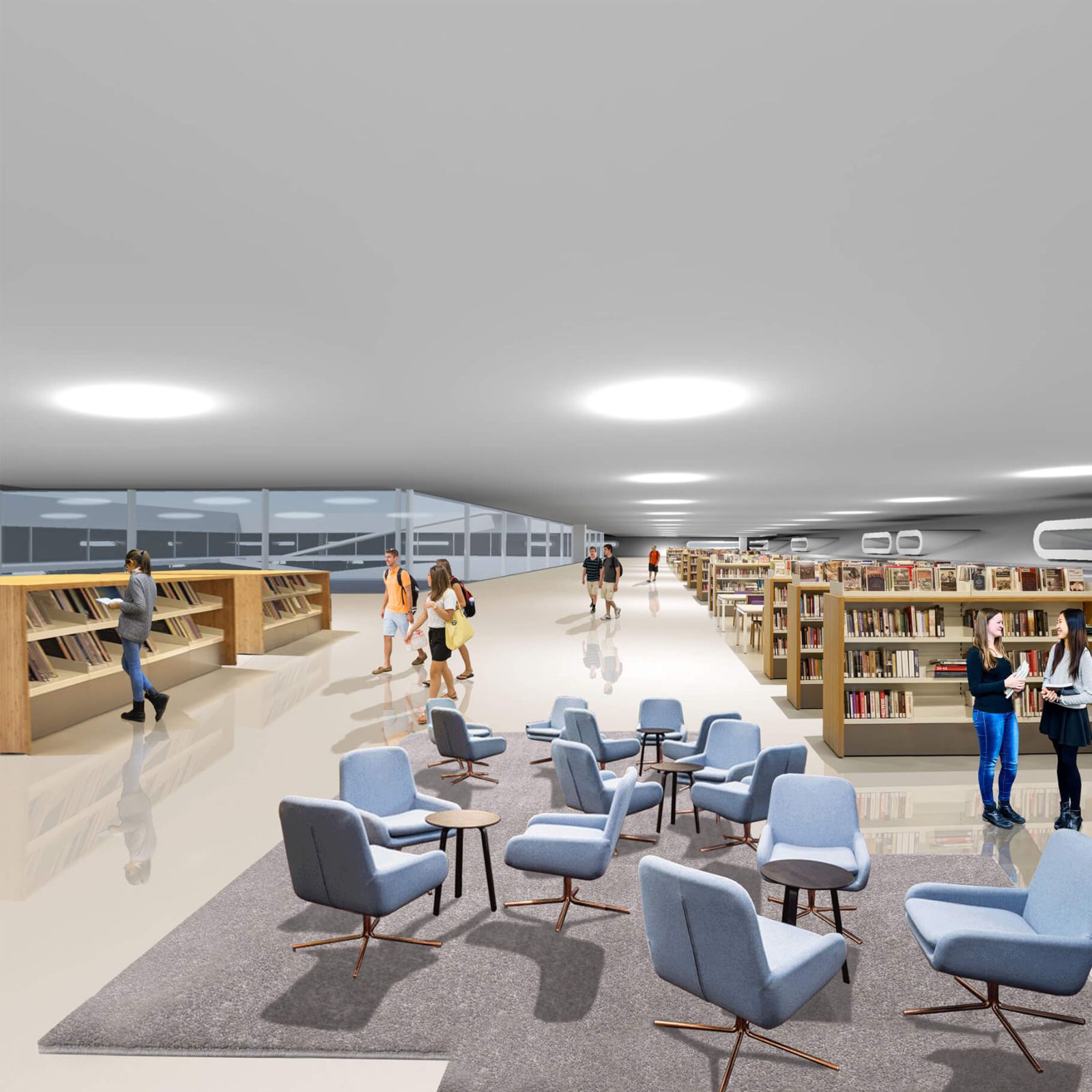
Image © Saverio Adriano Marchisciana 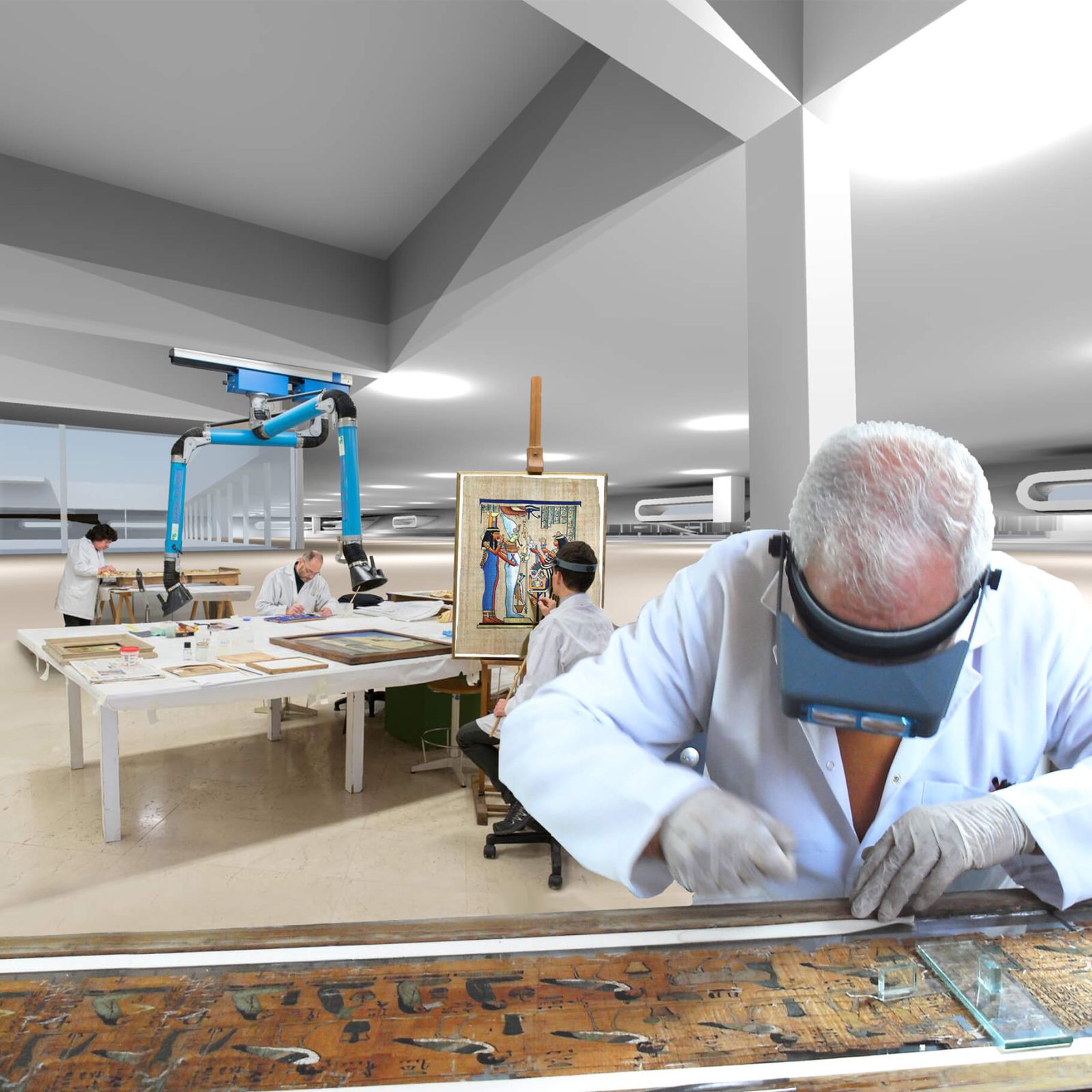
Image © Saverio Adriano Marchisciana 
Scheme 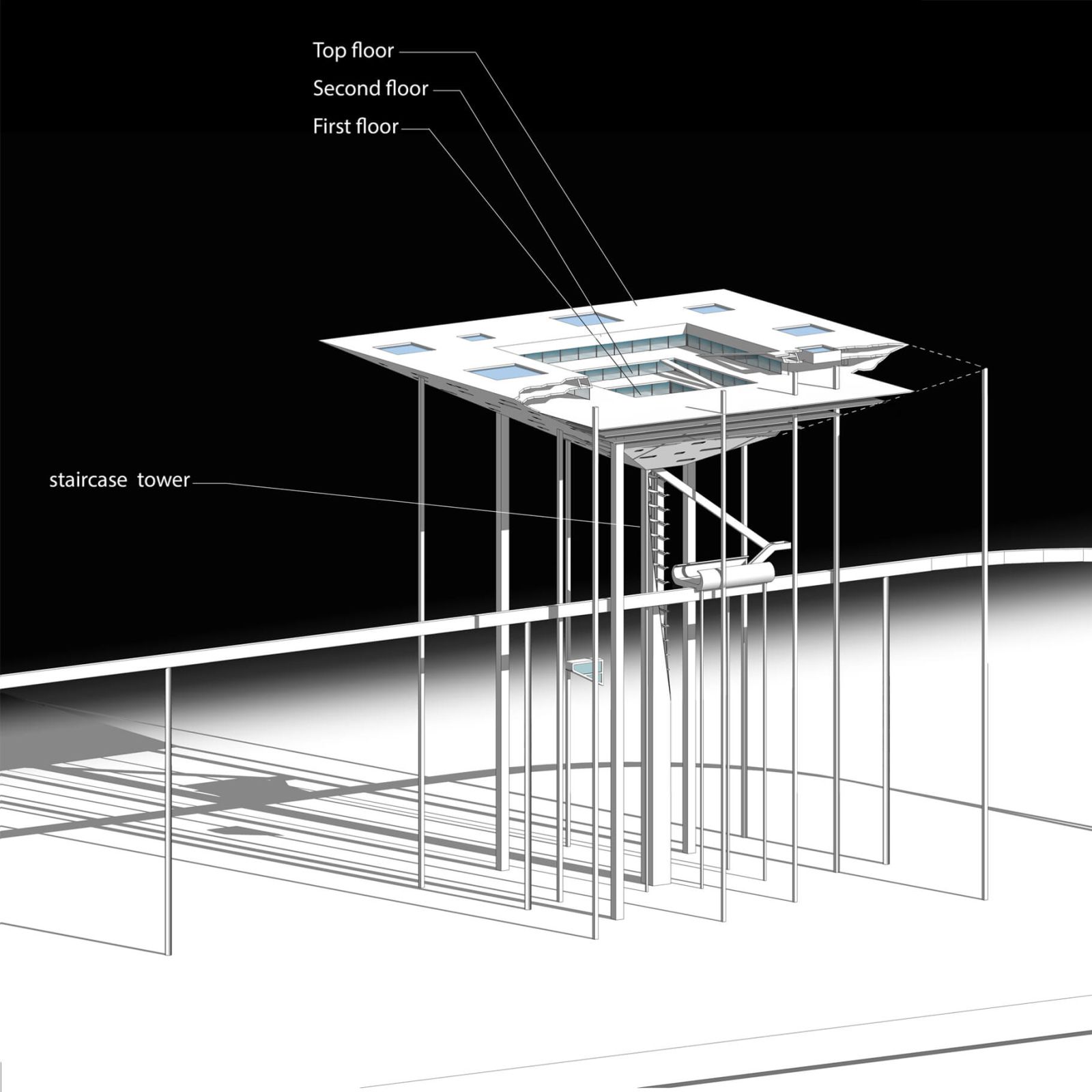
Scheme 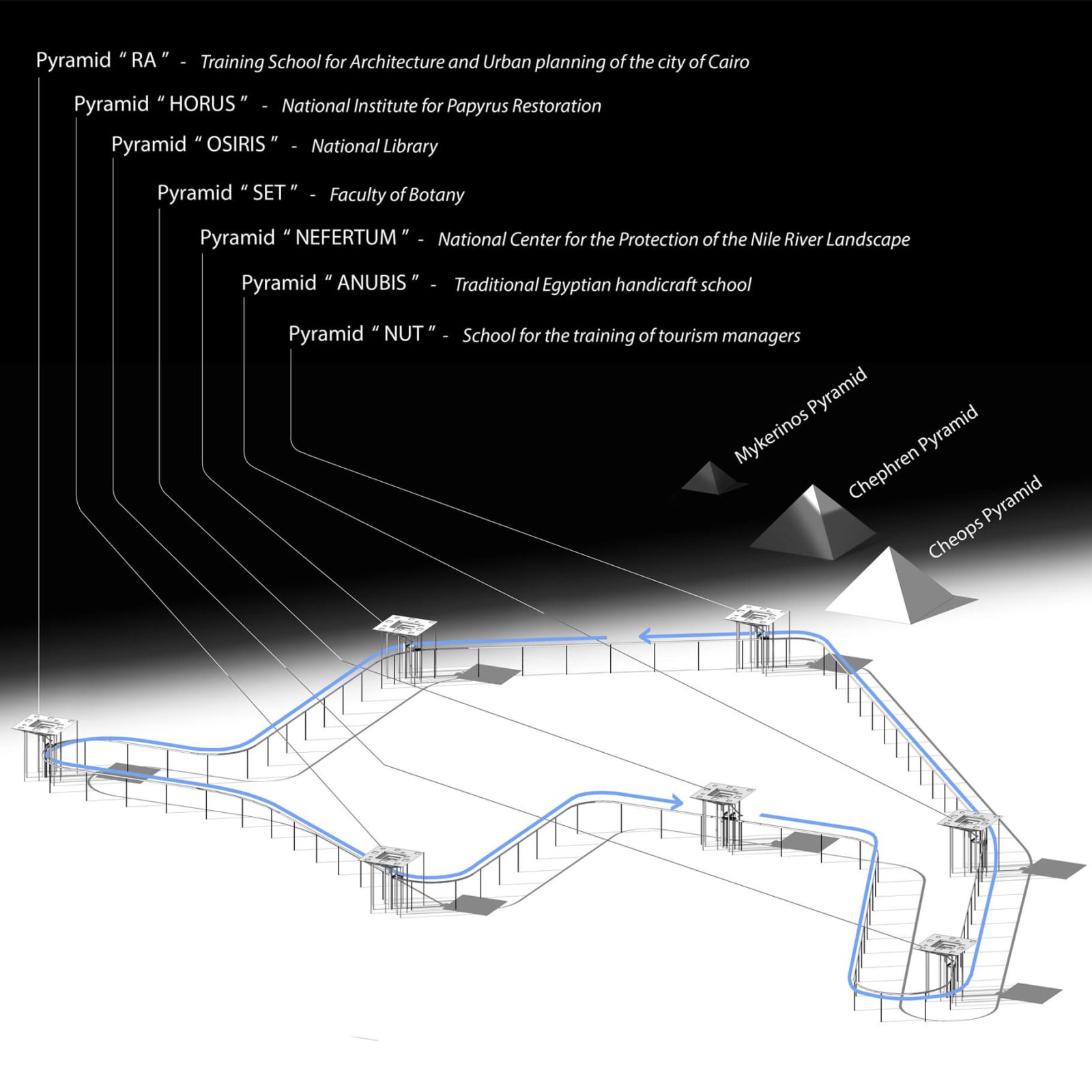
Scheme 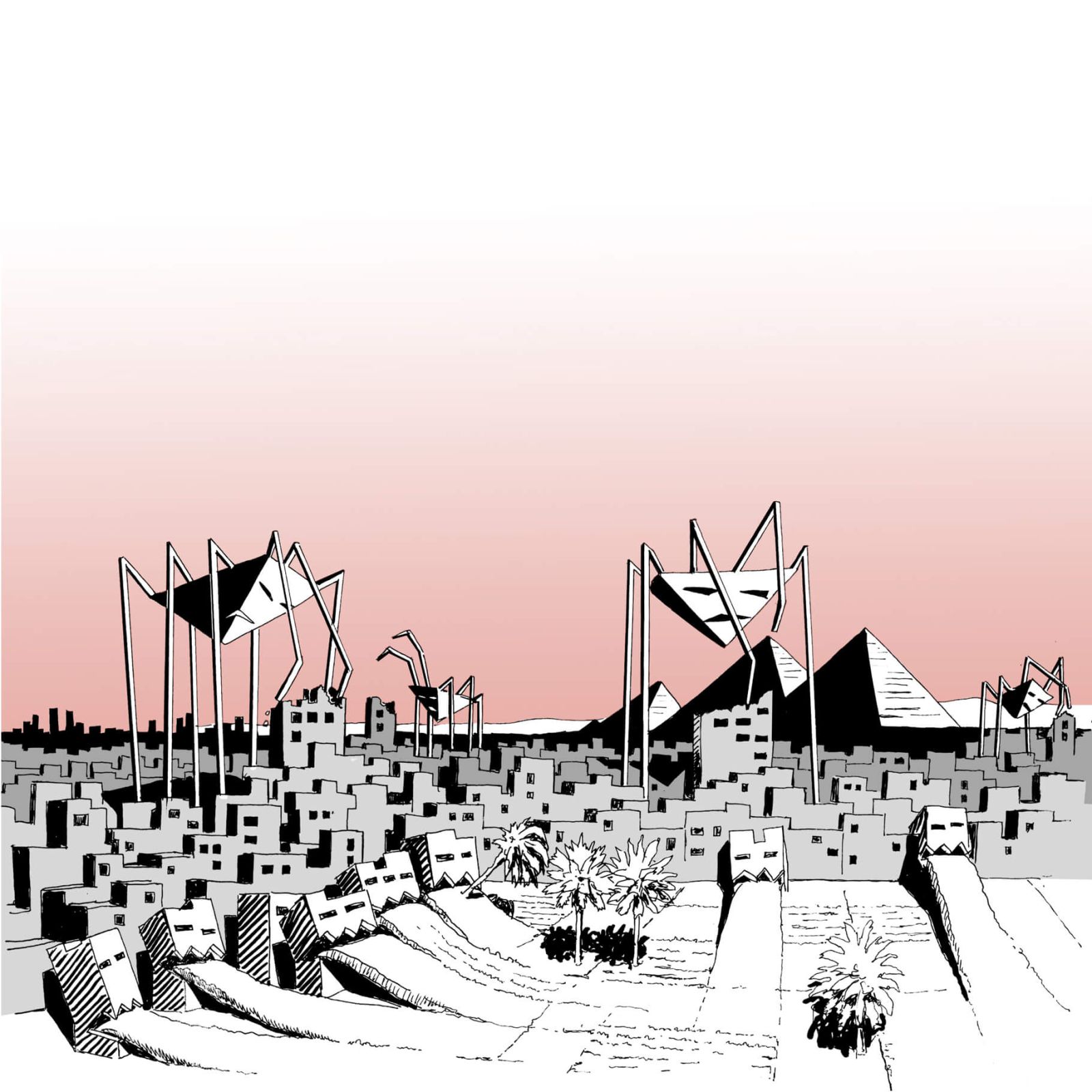
Sketch 
Site Plan


